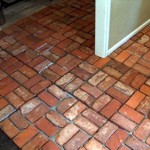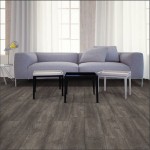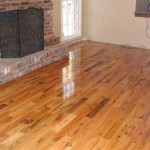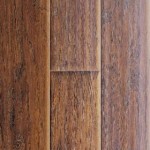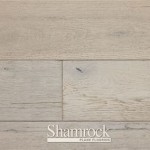Essential Aspects of Recycled Wood Flooring
In an era marked by environmental consciousness, recycled wood flooring has emerged as a sustainable and stylish alternative to traditional hardwood flooring. This eco-friendly option not only reduces the strain on our forests but also adds a unique character to homes and businesses alike. Here's an exploration of the essential aspects of recycled wood flooring.
Origins and Sources
Recycled wood flooring is derived from various sources, including reclaimed wood from old buildings, barns, and industrial structures. These woods have endured time and use, giving them a distinctive patina and exceptional durability. Additionally, wood pallets, shipping crates, and other industrial wood products can be repurposed for flooring, offering a cost-effective and environmentally responsible alternative.
Benefits of Recycled Wood Flooring
Recycled wood flooring offers a multitude of advantages:
- Environmental Sustainability: By utilizing reclaimed and recycled wood, we can reduce deforestation and conserve natural resources.
- Durability and Longevity: Seasoned recycled wood possesses inherent strength and resistance to wear, making it highly durable and long-lasting.
- Unique Character: Each piece of recycled wood tells a story with its natural imperfections, nail holes, and aged patina, creating a visually captivating and characterful flooring.
- Cost-Effectiveness: Recycled wood flooring can be more economical than traditional hardwood options, making it a budget-friendly choice.
Types of Recycled Wood Flooring
Recycled wood flooring comes in various types, each with its own aesthetic and performance characteristics:
- Solid Recycled Wood: Made from thick planks of reclaimed wood, solid recycled wood flooring is highly durable and can be sanded and refinished multiple times.
- Engineered Recycled Wood: Composed of a solid wood core with a top layer of recycled wood, engineered recycled wood flooring offers stability and moisture resistance.
- Parquet Recycled Wood: Crafted from small, geometrically shaped pieces of reclaimed wood, parquet recycled wood flooring creates intricate patterns and adds visual interest.
- Reclaimed Barnwood: Sourced from reclaimed barn walls, reclaimed barnwood flooring exudes a rustic charm and a touch of history.
Installation and Maintenance
The installation of recycled wood flooring requires skilled craftsmanship and appropriate preparation of the subfloor. Once installed, maintenance is crucial for preserving the beauty and longevity of the flooring:
- Regular Cleaning: Use a damp mop or vacuum to remove dirt and debris.
- Periodic Sweeping: Remove dust and grit with a soft-bristled broom.
- Protective Sealants: Apply a protective sealant to enhance durability and resistance to moisture.
- Professional Refinishing: Over time, recycled wood flooring may require professional refinishing to restore its original luster and protect its surface.
Conclusion
Recycled wood flooring embodies the principles of sustainability and timeless beauty. Its durability, unique character, and environmental benefits make it an exceptional choice for homes and businesses seeking to create a space that is both stylish and eco-conscious. By incorporating recycled wood flooring into your design, you not only enhance the aesthetic appeal of your space but also contribute to the preservation of our forests and the promotion of a more sustainable future.

Distressed Wood Reclaimed Flooring Eco Building S

Reclaimed Wood Flooring Mixed Hardwoods Vintage Timbers

Reclaimed Hardwood Flooring Gallery Pinnacle Floors

Heritage Oak Flooring Reclaimed Wood Solid Based

Reclaimed Wood Flooring Old Floors Rustic Vintage

If You Want Reclaimed Hardwood Flooring Without The Tag Buy This Architectural Digest

5 Great Ways To Use Reclaimed Flooring Rhodium Floors

Popular Reclaimed Wood Flooring Options Barnstormerswood

Reclaimed Wood Floor Magnus Anderson Hardwood Flooring

Reclaimed Wood Flooring New Jersey Real Antique
Related Posts

